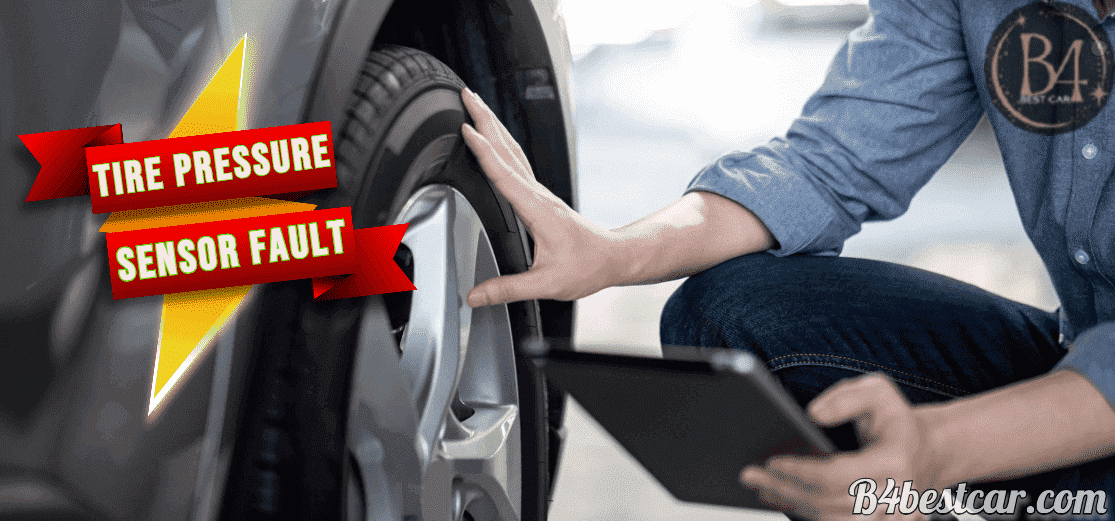Introduction
Have you ever seen that little warning light on your dashboard and wondered what it means? If it’s the tire pressure sensor light, you’re not alone.
Tire Pressure Monitoring Systems (TPMS) are crucial for vehicle safety, alerting you when your tire pressure is too low or too high.
But what happens when the sensor itself fails? Understanding how to deal with a tire pressure sensor fault can save you from unnecessary headaches and keep your vehicle running smoothly.
Read More: How to Remove Tint from Your Car Windows at Home
Understanding Tire Pressure Sensor Faults
Common Causes of Sensor Faults
Tire pressure sensors are designed to monitor and alert you of any issues with your tire pressure. However, like all components, they can malfunction. Common causes include:
- Dead Battery: Sensors often have batteries that can eventually run out.
- Physical Damage: Impact from potholes or road debris can damage the sensor.
- Corrosion: Exposure to moisture and road salt can lead to sensor corrosion.
Symptoms of a Faulty Tire Pressure Sensor
How can you tell if your tire pressure sensor is malfunctioning? Look out for these signs:
- Warning Light: The TPMS light on your dashboard might be on.
- Inaccurate Readings: Your vehicle’s display might show incorrect tire pressures.
- Flashing Light: A flashing TPMS light can indicate a more serious problem.
Read More: Appfordown: The Ultimate App Store Alternative 2024
Diagnosing the Problem
Tools Needed for Diagnosis
Before diving into repairs, you need to diagnose the issue accurately. Here’s what you might need:
- TPMS Scan Tool: This device can read error codes from your vehicle’s TPMS.
- Basic Hand Tools: For sensor replacement or adjustment.
- Tire Pressure Gauge: To check actual tire pressure.
Checking the TPMS Light
Start by observing the TPMS light:
- Solid Light: Generally indicates a low tire pressure or sensor issue.
- Flashing Light: This may indicate a malfunction with the TPMS system itself.
Read More: Wake ID Portal: How to Login to the WakeID Portal (WCPSS)
Using the TPMS Scan Tool
A TPMS scan tool can help you pinpoint the exact issue:
- Connect the Tool: Plug it into the OBD-II port of your vehicle.
- Read Error Codes: The tool will provide specific codes indicating sensor issues.
- Interpret the Codes: Use the vehicle’s manual or online resources to understand the codes.
Interpreting Sensor Error Codes
Each code provides information about the problem. Common codes include:
- C0050: Left front sensor fault.
- C0051: Right front sensor fault.
- C0052: Left rear sensor fault.
- C0053: Right rear sensor fault.
Read More: How to Read an Oil Dipstick: A Step-by-Step Guide for Car Owners
Common Tire Pressure Sensor Issues
Dead or Failing Sensors
Sensors have a limited lifespan and may fail over time. Replacing a dead sensor is often necessary.
Sensor Battery Problems
Most sensors have internal batteries that can deplete. If the battery dies, the sensor will need replacement.
Damaged or Corroded Sensors
Physical damage or corrosion can interfere with sensor functionality. Inspect the sensors for visible signs of damage or rust.
Faulty TPMS Module
The TPMS module controls the entire system. You might need a professional to diagnose and replace it if it fails.
Read More: Homarazzi: Exploring Pop Culture Through a Unique Lens
How to Fix a Tire Pressure Sensor Fault
Resetting the TPMS
Sometimes, a simple reset can fix the issue:
- Turn on the Ignition: Without starting the engine.
- Locate the TPMS Reset Button: This is often found under the dashboard or in the fuse box.
- Press and Hold the Button: For about 10 seconds or until the TPMS light blinks three times.
Replacing a Faulty Sensor
If resetting doesn’t work, you might need to replace the sensor:
- Remove the Tire: To access the sensor.
- Detach the Old Sensor: From the valve stem.
- Install the New Sensor: And reattach the tire.
Read More: The ://vital-mag.net Blog: A Comprehensive Guide 2024
Recalibrating the TPMS
After replacing a sensor or adjusting tire pressure, recalibrate the TPMS to ensure accurate readings:
- Drive the Vehicle: At speeds over 50 mph for about 10 minutes.
- Check the TPMS Light: It should turn off once the system recalibrates.
Checking and Adjusting Tire Pressure
Ensure your tires are inflated to the recommended pressure. Use a tire pressure gauge to check and adjust as needed.
Read More: How to Clean Your Steering Wheel: A Comprehensive Guide 2024
Preventive Measures
Regular Maintenance Tips
Prevent future issues by:
- Checking Tire Pressure Regularly: Use a gauge to ensure proper inflation.
- Inspecting Sensors: For any signs of damage or corrosion.
How to Avoid Common Sensor Problems
- Avoid Potholes and Debris: These can damage sensors.
- Keep Sensors Clean: Regularly clean around the sensors to prevent buildup.
Importance of Tire Care and Maintenance
Proper tire care is essential for extending the life of both your tires and sensors. Regularly rotate your tires, balance them, and properly align them.
Read More: Fapegram: The Ideal Platform for Content Creators
Professional Help vs. DIY Repairs
When to Seek Professional Assistance
If you’re unsure about diagnosing or fixing the issue, consult a professional:
- Complex Issues: If the TPMS module is faulty.
- Expert Diagnosis: For accurate identification of sensor problems.
Pros and Cons of DIY Repair
Pros:
- Cost Savings: Avoid labor costs by doing it yourself.
- Convenience: Fix the issue on your schedule.
Cons:
- Complexity: TPMS repairs can be intricate.
- Potential for Mistakes: Incorrect repairs can lead to further issues.
Read More: 1st Fastest Car in the World 2024: A Journey Through Speed
Conclusion
Dealing with a tire pressure sensor fault doesn’t have to be a daunting task. By understanding common issues, knowing how to diagnose the problem, and following proper repair procedures, you can keep your TPMS functioning correctly.
Remember to perform regular maintenance and seek professional help to ensure your vehicle remains safe and efficient.








